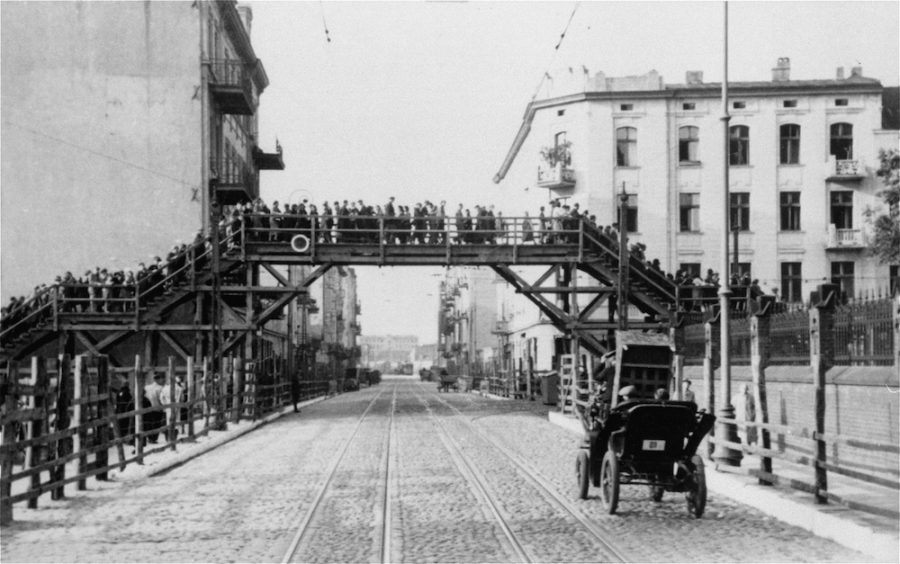Łódź to Litzmannstadt: Derek Hastings on the Rywka Lipszyc diary
Photo courtesy of Emanuel Ringelblum
A bridge in Łódź ghetto. Rywka Lipszyc recorded her experiences in a diary during her imprisonment at Łódź.
On Sept. 1, the Holocaust Memorial Center in Farmington Hills welcomed Derek Hastings ‒‒ associate professor of history at Oakland University ‒‒ to present on the diary of Rywka Lipszyc.
Lipszyc, a Polish-Jewish teenage girl, composed a diary during her imprisonment in the Łódź ghetto and eventual transfer to the Auschwitz-Birkenau death camp. Her fate is unknown as she disappeared from recorded history upon entrance into Auschwitz, with April 1944 marking the last of her diary entries. Hastings’ speech and presentation served as the keynote events of the evening centered on the Holocaust Center’s featured exhibit, “Rywka’s Diary ‒‒ A Girl Lost, a Diary Found.”
Born on Sept. 15, 1929, Rywka grew up the youngest of four children in the Polish city of Łódź. Following the 1939 German invasion of Poland, Rywka and her family were forcefully relocated to the Łódź ghetto ‒‒ a sealed off area in the northwestern part of the city, isolated from the outside world via brick walls, barbed wire fences and devoid of running water and sewer ‒‒ where her father died from complications from a severe beating during the initial stages of the German occupation in 1941. One year later, Rywka’s mother died from malnutrition and exhaustion.
“Rywka was fourteen when she started her diary. She took it with her when she was moved to Auschwitz…although the persecution of the Jews began with the German invasion, the establishment of the ghetto took time,” Hastings said. “From the beginning [of Nazi occupation], ethnic Germans in Łódź (renamed Litzmannstadt as a result of Nazi urban renewal program) came forward to exercise German control over the city, to fly Nazi flags and use the Hitler salute.”
The creation of ghettos for the concentration and isolation of Jewish people was a tragically common practice throughout Nazi-occupied Europe, Hastings explained. Continued maintenance of many ghettos, and the Łódź ghetto specifically, was a result of bureaucratic warfare within the Nazi regime centered on the productivity of the Jewish slave laborers sealed in the ghetto.
The Nazi government maintained the ghettos as it decided between whether to keep Europe’s Jews alive to be used for slave labor, or if it was easier to kill them all using the developing death camps in Eastern Europe, which constituted the “Final Solution.” The latter finally won out, with Rywka’s ghetto being liquidated in 1944, and its inhabitants were sent to Auschwitz in 1944 for extermination by gas chamber.
“Her [Rywka’s] adolescent perspective gives insights that the older, ‘more mature’ people would not have been able to give,” Hastings said. “I think what she would try to tell us is that we all underestimate ourselves, we all think our limitations mean that we don’t have anything important to say.”
Hastings focused the later stages of his presentation on the themes he believed to be present in Rywka’s diary. Things such as her youthful, tragic infatuation with teenage life, her eternal mourning for dead family members and her contemplation and sometimes yearning for the release of death were all themes that screamed in a dark, isolated agony in the tightly packed one hundred or so pages of her diary. However, the diary’s pages also feature experiences that carry a glowing, but broken light for the reader to view her life from.
“Her diary, as a tangible object, is a form of immortality that allows her to still influence the world around us through her thoughts and experiences,” Hastings said. “Her hope was not misguided.”






